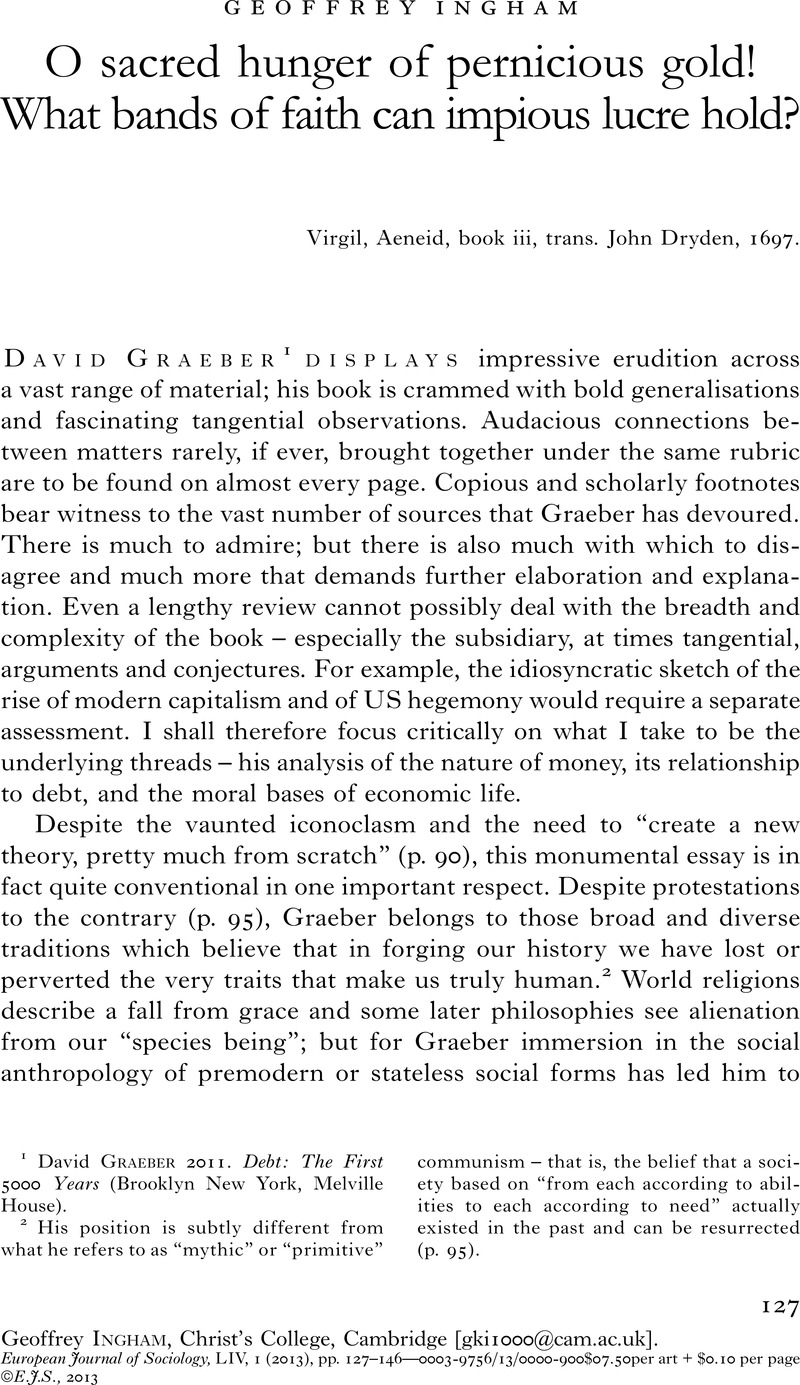Crossref Citations
This article has been cited by the following publications. This list is generated based on data provided by Crossref.
Sgambati, Stefano
2015.
The Significance of Money Beyond Ingham’s Sociology of Money.
European Journal of Sociology,
Vol. 56,
Issue. 2,
p.
307.
Semenova, Alla
and
Wray, L. Randall
2015.
The Rise of Money and Class Society: The Contributions of John F. Henry.
SSRN Electronic Journal,
Waizbort, Leopoldo
2020.
GLOSA SOBRE A MOEDA Mauss & Simiand.
Revista Brasileira de Ciências Sociais,
Vol. 35,
Issue. 103,





